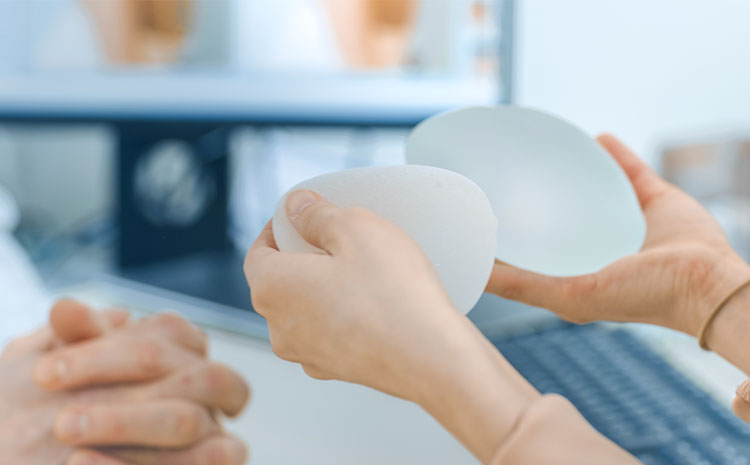
Where Should I Place My Breast Implant?
Breast augmentation surgery is a life-changing and risky endeavor. Of course, women who go through it want satisfying outcomes. These results can be difficult to achieve if their breast implants are placed in the wrong places. This article details the areas where surgeons usually place implants. It also suggests considerations when deciding on implant placement. Finally, it highlights the advantages and disadvantages of different breast implant placement types.
Three Placements Where Surgeons Place Breast Implant
Surgeons can place an implant to increase a patient’s breast size in three ways. These are the Sub-glandular, Sub-pectoral (Sub-muscular) and Dual Plane placements.
Sub-glandular
If a surgeon suggests a Sub-glandular placement, he will put the implant at the back of the mammary gland, just in front of the chest muscle. It is also known as the Over-The-Muscle technique
Sub-muscular/Sub-pectoral
This placement involves putting the implant under the Pectoralis Major (chest) muscle. Because this muscle is fan-shaped, the surgeon can only cover part of it with breast tissue. It is also known as the Under-The-Muscle technique.
Dual Plane
The Dual Plane technique involves the use of both the Sub-glandular and Sub-muscular techniques. The surgeon uses the Sub-muscular method to emplace the upper part of the implant. He puts it in a pocket under the chest muscle (Pectoralis Major) then covers the lower portion of the implant with breast tissue.

Breast Implant Placement: Things to Consider
Placing an implant should be a simple process that enlarges the breasts. The reality is somewhat different. Each of the above-mentioned processes results in the breasts having a different look. Consider a few factors before deciding on one.
Soft Tissue
Breast surgeons cover implants with soft tissue. The more breast tissue there is, the less visible and palpable the implant. If you have firm breast tissue, which implant you choose shouldn’t make a difference. However, the amount of soft tissue will impact the look of your breasts significantly if it is thin.
Pectoralis Muscle
The Pectoralis Major muscle doesn’t stretch as much as breast tissue. It acts to prevent the breast pocket from overstretching. Therefore, this affects the coverage of the implant.
Mammography
Do you go for regular mammograms? Consider this if you do. Radiologists suggest that implants below the Pectoralis Major Muscle don’t interfere as much with mammography as much as those above it.
Surgical Procedures
Consider the amount of surgical effort needed to place the implant. The implant placement you choose could affect the surgical process you require, as explained in the section below.
Cutting the Muscle
Surgeons must cut the breast muscle slightly if patients request for a below-muscle placement. However, doing so doesn’t involve much discomfort.
Which is the best place for a breast implant?
Putting your implant in the right place will ensure that you get the silhouette that you want. Here are the pros and cons of the four placements, and descriptions of how they will make your breasts look.
Sub-glandular
Advantages
A Sub-glandular placement will give the breasts a full look, which many women prefer. The surgeon can place them close together to give them lift. Also, placing the implant over the chest muscle prevents it from becoming distorted. It won’t bend when you flex your muscles. Therefore, this position ideal for women who exercise. Furthermore, the surgical procedure involved is less complicated than for the other placements. It is also minimally invasive.
Disadvantages
This surgery suits women who have a fair amount of firm breast tissue. Also, note that the over-the-muscle method will require you to go through more extensive mammograms than the other techniques. According to Dr Sandhya Pruthi, implants interfere with the accuracy of mammograms because they block breast tissue.
Sub-pectoral/Sub-muscular
Advantages
The under-the muscle technique suits most women because they don’t need to have a lot of breast tissue. Also, it enhances their silhouettes naturally. A Sub-pectoral placement requires more tissue padding, so implants are less visible. The padded tissue and chest muscle support the weight of the breast, so there’s less risk of sagging than with other methods. It also interferes less with mammography than other placements. Moreover, the surgical process is more straightforward than the others.
Disadvantages
Note that the breast will sit in a high position for a few weeks. This placement may not suit you if you exercise a lot because flexing the muscles may distort the implant. Also, the surgery is more invasive, requires a longer recovery time than other placements, and involves more pain. It’s not advisable for you if you have soft or sagging breast skin, which may hang over the implant.
Dual Plane Implants
Advantages
This technique blends the positives of both the Sub-glandular and Sub-muscular techniques. Since the surgeon can release the overlying breast tissue to the chest muscle in varying degrees, he can customise the look of the breast to suit the patient. The result is natural. The fascia and chest muscle secure the breast, preventing it from dropping or forming wrinkles. The implant isn’t likely to palpate.
Disadvantages
Since the Dual Plane technique involves some Sub-pectoral surgery, it has the same disadvantages. Your breasts may sit in a higher position than they should for four to six weeks. Women who exercise a lot shouldn’t use it because movement may dislodge the implants. Since it involves the combination of two techniques, the surgery is quite invasive.
In all, it is still up to your individual preferences and physical characteristics to determine which technique is best for you. Always discuss all the advantages and disadvantages of surgical procedures with an experienced plastic surgeon before making a decision.
